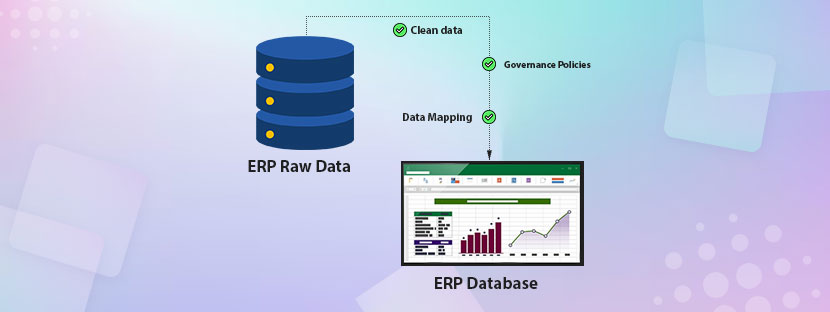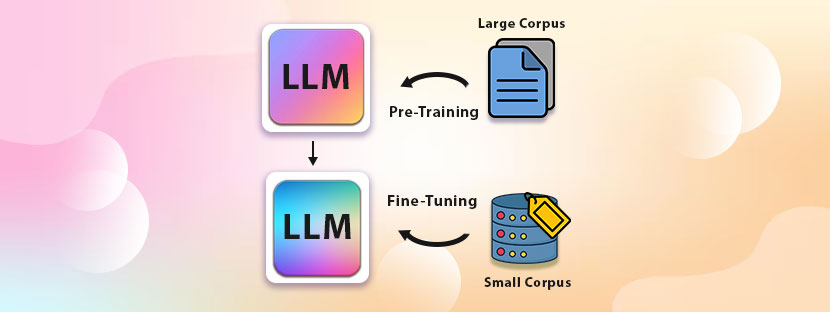In This Article
Installing a decent ERP system makes organizations powerful enough to keep track of their resources. But we’ve all heard the horror stories of ERP implementation plan failures that made businesses stay back for a long time. Noting to disagree, ERP implementation risks are there, and they impact across business processes to a great extent.
Many organizations also keep an outdated system because they are aware of new ERP implementation failures. But it’s not a solution. Using outdated ERPs has its peculiar disadvantages. To bring a solution to the front, assessing how we can reduce the risks of ERP implementation is the way.
Let’s discuss these ERP implementation issues in this blog and try to figure out how we can minimize the failure rates. More to say, figuring out the best practices of ERP integration is the aim of this piece.
Are you ready to have a detailed discussion? – If yes, keep your mind open and read it thoroughly.
Risks of using an outdated ERP system
Many organizations still exist today that have no idea when they have updated their ERP system. Maybe 20 or 30 years ago, when they started functioning. It’s been a real case over here. Over the last 5 to 10 years, they started digitizing their documents, but didn’t give attention to replacing or updating their existing ERP system.
On the other hand, it’s a fact that 50% of ERP implementation plans fail the first time. That makes organizations reluctant to change or update the existing ERP system.
As a result, organizations keep using outdated versions of the ERP system, which hurts their operations. Let’s address how using an outdated ERP can increase the risks of data failure and operational mismanagement in the organization.

💠No official support
After some point, publishers of ERP tools and software stop supporting their earlier versions of ERP systems. In the short term, there is no visible effect when support is cut from the ERP system. However, long-term impacts are immense in this category. The system, over time, becomes unpredictable, and it leaves no solution to be fixed unless upgraded to the latest versions.
In most cases, software providers launch new versions and wait for their increasing popularity. Once the new versions receive more responses, they discontinue the old versions. Basically, they force you to try the latest versions. If you still not yet upgraded your earlier version, they simply stop supporting it.
💠High security vulnerability
If core software is no longer being updated, it increases security issues. ERP is a key system where organizations store all vital information for smooth operations. A security vulnerability is not tolerable at any cost for this system. Financial and reputational consequences would be there where businesses need to check.
To simplify the importance of security updates, consider the example of flu shots. Like receiving flu shots prevents you from contracting flu strains, similarly, security updates prevent security risks. Update your ERP system before it’s too late to prevent security vulnerabilities.
💠Increase consulting expenses
Getting consultants to fix your old ERP system is an expensive deal. Many consultants charge an excessive amount of fees in exchange for fixing issues in old versions. When software providers come up with a new version of their tools, it’s a natural tendency that consultants will focus more on that. Gradually, earlier versions or old systems get neglected. To avoid such a situation, replacing older versions of ERP with the latest ERP update is the best.
💠Costly maintenance
Generally, older systems require more troubleshooting and extensive maintenance than the latest versions. So, it can increase your costs to have a smooth-functioning ERP system using the earlier versions. The same formula you have seen in practice when it comes to maintaining old cars. A time will come when the maintenance costs will exceed the costs of purchasing a new one. ERP systems also follow the same.
💠 Becoming incompatible
Skilled people (those who maintain ERP systems) always try to update their skill levels. For that, they learn and keep pace with the new versions of ERP systems. It’s hard for them to use your old versions of ERP. Basically, their extensive skills will become incompatible with your ERP system
💠 Harm employee-customer relationships
An outdated ERP system leaks data and becomes completely useless after a point in time. But the impact it makes lasts for a long time. Using risky software keeps your ability to deliver credible solutions paralysed. It ends up degrading your employee-customer relationships. Plus, unpredictability
Benefits of upgrading your business’s ERP system
Switching to a new ERP system from the existing one is a very good idea to consider. Every organization should update its existing system once in a while to keep the security threat at bay. We will talk about how to secure your ERP later in this blog. Here, we would like you to focus on the exclusive benefits that you can achieve when you consider upgrading your existing ERP system.
Have a better quality system. Information passes through the system at lightning speed. If your system is 10 years old, naturally, the flow of your data will be slow inside your system. Even if it’s a 5-year-old system, it needs an update. Once you upgrade, you can ensure high-quality data flow through your system seamlessly.
Achieve more in less time. Performance has always been the main point when it comes to functioning ERP software. Thus, using an updated version of the ERP system can make your system run faster and help you accomplish more in less time. Basically, updated ERP systems increase productivity.
Streamline business procedure. Most of the ERP system providers have integrated automation facilities through their latest updates. Hence, the ERP system users can easily bring those automation functions into their regular ERP operations. Earlier, when regressive manual efforts were needed, now it all happens through automated facilities.
Reduce costs in the long run. Though updating to the latest ERP software is an expensive affair but it saves costs in the long term. Updating your ERP software to the latest version will always increase your performance to go up. Likewise, productivity will increase, and all the processes will run smoothly and effectively. In the long term, you’ll save more costs using the updated ERP system.
Install an integrated system. Your organization is currently using or might be using various software for performing various activities. So, when you update your existing ERP, it will become easy for you to integrate all your software and systems. An integrated system processes information faster.
ERP Implementation Challenges and Risks
Now we have come across the main part of this blog where we’ll explore the challenges of implementing ERP.
Implementing or updating ERP seems a heavy deal for many people. Mainly, it happens because a little change in the ERP can affect the business process across the entire organization. People often have to change the way they used to work before in the ERP. These reasons are the tip of the iceberg; the main reasons are also there. For that, we need to enquire deeply.
ERP implementation challenges primarily cover people-related challenges and technical challenges. Let’s assess both matters here.
➣ Project planning
Without having a clear and realistic plan, ERP implementation becomes ineffective. Most of the time, organizations underestimate the time and budget for the ERP implementation. So, it turns into budget overruns. Many things get clubbed together and appear in the front that were not part of the original plan. It happens only when there is no solid plan in place before installing or updating a new ERP system.
Another issue that will appear when there is no plan for ERP implementation is staffing issues. Underestimating staffing needs creates many problems that can be fixed if the ERP implementation plan is made accurately.
➣ Project management
Installing a new ERP system is a multi-layered process. Various phases are there; from discovery to testing, all the processes are quite elaborate in nature. An excellent project management style is needed to execute the plan accordingly.
Implementing the defined ERP within the time with expected results is possible when you have an effective project management plan. Setting up a key time frame along with milestones, plus a transparent communication process installed in every layer, can ensure ERP implementation is a success.
➣ Data integration
Using an ERP system makes organizational operations faster and smoother over time. It provides a single source of data to the organization. The first key step for ERP implementation starts with migrating data to the new system from the old databases. Having all your data at your disposal is the main matter here. Here comes the main challenging part.
Rarely does any organization keep all its data in separate databases. Most of the time, all data gets spread across various components and never comes into a complete image. For example, typically your finance data is stored in your financial database, all employee information is stored in HR databases, and the rest of the data in the rest databases. ERP systems combine all these databases and prepare an integral system.
A well-defined migration plan can help implement ERP within the stipulated time and budget. Updating the ERP system or implementing a new ERP system is an opportunity to weed out obsolete data that has made the existing system slow. It can also fix data duplication issues from the core.
➣ Data quality
Referring to the previous process, various things are getting done when a new ERP system is installed in the organization. It involves the correction of old records, cleaning the database, updating old records, and deduplication of data. Naturally, after going through all the processes, the quality of your data will improve.
Explore the sizeable impact of putting quality data into your newly implemented ERP system. Let data quality measurements assist you throughout your journey.
Forgetting or undermining data quality metrics can make ERP implementation hard. Before you live your ERP database, you need to make sure the quality of your data remains in a good state. For this purpose, you can distribute the tasks of enhancing data quality to various groups. For example, you can ask the finance department to prepare a clean financial database or ask sales teams to hand over a clean customer database. Once they submit, you can integrate them into your ERP system and start all the functions.
➣ Change management
Switching to a new application for managing the ERP is more than just changing the application. It involves overhauling the business processes to take advantage of the newly installed systems. To implement this measure, you need a shift in mindset and a change in the regular work pattern of your people. The real pain, i.e, the pain of change, comes at this time.

Resistance comes automatically when there is a talk related to change enters. Resistance to change is an inevitable part and one of the biggest roadblocks in ERP implementation. Therefore, the role of leadership appears visible when it comes to managing change. Communicating the importance of updating the ERP system to all the stakeholders can help here. Special attention should be given to the end users of the front lines. Make sure all the users have received comprehensive training and support to adopt the new ERP system.
➣ Cost burden
Cost overruns are the secret pain that keeps organizations reluctant to update their ERP systems. In most cases, it has been seen that ERP projects surpass the set budget after the installation kicks off. Many organizations either stop the implementation plan or end up spending too much on the ERP projects.
Adding custom features to the ERP system makes it more powerful and easier to work with. That’s why organizations always want to add more customer features to their working systems. But adding custom features always increases cost factors. ERP vendors can charge separately, which is not mentioned in the initial package. So, keep your eyes on them.
Data migration is an integral part of the ERP implementation process and also a costly matter. Data migration can take up to 10-15% of your total project costs. You must consider it if you’re implementing a new ERP system at your organization. Otherwise, it will surpass your project budget without your attention.
➣ Constant improvement
Implementing ERP is not like a one-time effort that you start once and then close immediately. Till the date the system will stay live, you need to provide a constant effort to improve it. That can turn into a challenge for many organizations as they cannot keep their ERP systems in the improvement stage.
Depending on the system you’re using (cloud or on-premises), the improvement plan will be set. At times, organizations have to consider minor updates to their ERP systems. Plus, periodic assessment of whether the current ERP system is working fine or not should be included in the constant improvement plan. Neglecting them can cause serious issues and become a major barrier to the ERP system.
Best ways to plan and implement a new ERP system effortlessly
⓵ Befriend the Chaos Before You Try to Fix It
Before you even whisper the word “ERP,” take a good, honest look at your existing system — that beautiful, chaotic, Excel-and-email Frankenstein that somehow keeps your company running. You can’t fix what you don’t understand, and you can’t replace what people emotionally depend on (and trust me, they love their spreadsheets). Spend time mapping how things actually work, not how your process manuals say they work.
Interview your staff, stalk their workflows, and observe where the chaos hides. You’ll find some people still use sticky notes as “official records,” others rely on mental checklists, and someone’s definitely hoarding critical data in a folder named “New Final Latest_FINAL_v5.” Document everything, laugh through the madness, and admit, this system may be a mess, but it’s your mess. Knowing it inside out is the first step to not breaking it during your shiny new ERP rollout.
⓶ Don’t Announce It Like a Royal Decree
When you announce a new ERP system, don’t act like a medieval king shouting from the balcony: “From this day forth, thou shalt abandon thine old ways!” People will panic, revolt, and possibly form an underground resistance group called “Excel Forever.” Instead, be smart, roll out the idea like a Netflix teaser. Build curiosity, not fear.
Start with a few success stories — maybe show how automation will make their lives easier. Use humor: “This ERP system will save you from typing ‘same data’ into ten different forms, and give you time to finally enjoy lunch!” Let them know it’s not a robot uprising; it’s a productivity upgrade. Early buy-in reduces later rebellion. After all, people hate change, unless they think it was their idea.
⓷ Assemble the “Avengers” of Your Company
An ERP implementation is not a one-person show; it’s an ensemble cast kind of movie. You need your Avengers. a dream team of representatives from every department who understand the current pain points and can help shape the new system. Choose wisely: pick people who know how things really work, not just how they’re supposed to work.
You’ll need a mix of geeks, negotiators, and chaos-tamers, people who can translate between “tech talk” and “business talk.” Call them your ERP superheroes. They’ll be your bridge between the old unorganized world and the new digital utopia. Reward them with pizza, praise, and maybe a small trophy that says, “Survived ERP 2025.”
When your Avengers assemble, they’ll test modules, catch errors, and keep morale high, ensuring the rest of the company doesn’t lose their minds during the transition.
⓸ Crawl Before You Sprint (Phased Implementation Is Your Lifeline)
You wouldn’t try to eat an entire cake in one bite (unless it’s Monday morning). Similarly, don’t implement the whole ERP at once. Take the phased approach, start small, perfect the process, and expand gradually. Choose one department or function as a pilot, like finance or HR, to test the waters.
This way, you can make mistakes safely before rolling out company-wide. Think of it like learning to drive in an empty parking lot instead of the highway. If something breaks, it’s easier to fix before everyone’s data gets tangled up in ERP spaghetti.
Plus, a phased approach gives employees time to adapt. They’ll grumble less when they see that the world didn’t end for the pilot team in fact, their lives got easier. Once word spreads that the new system auto-generates reports while they’re still sipping coffee, the rest will actually want in.
⓹ Respect the Ghosts of the Old System
Here’s the thing: your old unorganized system is not entirely useless. Sure, it’s chaotic, but it has valuable tribal knowledge buried in its dusty corners. Maybe an employee remembers why “Inventory Sheet B” exists or how “Customer List 3 (Do Not Touch)” became the holy grail.
Respect that legacy. Don’t just delete old files or dismiss them as junk. Migrate the critical data carefully, and make sure nothing valuable gets lost. This is where your data entry and cleanup teams become your unsung heroes. Create data-mapping sheets, cleanse duplicates, and standardize everything before migration. It’s not glamorous work, but it’s what prevents your ERP from choking on corrupted data later.
Remember: garbage in, garbage out. If you feed the new system with messy data, it’ll politely output messy chaos, only this time, in high definition.
⓺ Train Like You’re Preparing for the Olympics (But Make It Fun)
Now comes the part most people underestimate — training. You can buy the fanciest ERP in the galaxy, but if your employees don’t know how to use it, it’s basically an expensive digital paperweight. So, don’t just hand them a PDF manual and expect magic. Make training an event.
Host interactive workshops, create real-life scenarios, and sprinkle humor into the sessions. Run friendly contests: “Who can create a purchase order fastest?” Offer rewards like “ERP Master” badges or snacks (snacks work wonders). The goal is to turn confusion into curiosity and frustration into excitement.
And don’t stop after one training session. Offer refreshers, one-on-one help desks, and internal chat groups for quick support. Remember, learning a new system is like learning to dance, awkward at first, but soon everyone’s grooving in sync.
⓻ Expect Glitches, Panic Less, Fix More
Even the smoothest ERP launches have hiccups. Expect things to go wrong, the system might crash, someone will enter wrong data, and your accounts guy will swear the numbers “look possessed.” That’s okay. The key is to stay calm and fix issues fast.
Create a “panic room” team (not literally), a small support group ready to troubleshoot and respond to complaints. Keep communication transparent: tell employees what went wrong, what’s being done, and when it’ll be fixed.
The funniest part? Over time, these mini-crises become your best teachers. You’ll learn what to fine-tune, what to automate, and what not to repeat. So laugh at the glitches, fix them, and move forward. After all, Rome wasn’t built in a day, and your ERP system definitely won’t be either.
⓼ Celebrate the Wins (Even the Small Ones)
Once your ERP system starts humming along, don’t just nod and move on to the next project. Celebrate! Recognize the people who survived the journey, the departments that adapted quickly, and the team that made the impossible happen.
Host a small “ERP Graduation Party.” Give out funny awards like “Spreadsheet Survivor,” “Data Cleanup Champion,” and “ERP Whisperer.” Post before-and-after snapshots showing how much time or cost you’ve saved.
Celebration is more than fun; it’s psychological closure. It tells everyone, “We did it. We tamed the chaos.” It reinforces the idea that change, though painful, can be rewarding. And by making it fun, you ensure employees stay positive about future updates or system upgrades.
Lastly, secure your ERP system
The ERP system is the backbone of an organization’s operations, and that’s why it is the most attractive target for cyber threats. The cost of an unsecured ERP is huge, and organizations cannot possibly recover it quickly. Therefore, it requires a stable strategy to over-secure your ERP in the most secure way.
For your reference, there are many security architectures that exist, which can help you establish a strong ERP system within your organization. Measurements such as risk-based vulnerability management, zero-trust architecture, automated user provisioning, etc, are part of it. An ERP system requires persistent support, not a one-day support, and everything is fine.
Becoming proactive when it comes to managing your ERP is the right way here.












